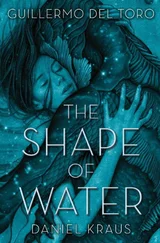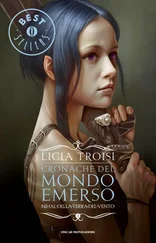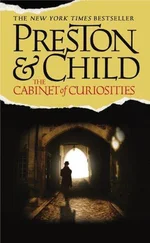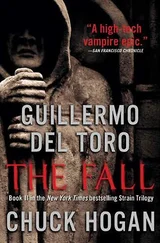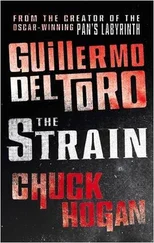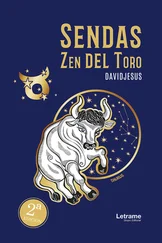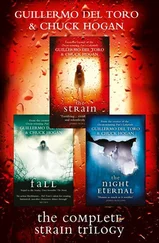GUILLERMO DEL TORO
THE WORLD AS CABINET
“You have to believe the magic to see it.”
— GUILLERMO DEL TORO
FOR GUILLERMO DEL TORO, IT ALL STARTS WITH THE EYE—or, more accurately, the lens. His keen vision processes everything, judging it, molding it to his intellectual and creative purpose, turning it to his interests and obsessions, exquisite and grotesque, and crafting it into an endless procession of indelible, unique images—some on the world stage, some utterly private.
Most private of all are his phenomenal notebooks, full of pointed observations, random thoughts, sketches from life, and wondrous drawings. At first glance, they appear to resemble those of another polymath, Leonardo da Vinci. A true modern Renaissance man with stunning capacity, vast interests, and endless enthusiasm, Guillermo del Toro invites such a comparison. Like Leonardo, Guillermo is an artist with wide interests and talents who can be hired but not bought and who approaches the way he lives with a passionate aesthetic sense.
“One of the biggest lessons Leonardo leaves for all creators is that man is the work of art,” notes Guillermo. “Obviously, the Mona Lisa is a masterpiece. The Vitruvian Man, The Last Supper —both masterpieces. We can all agree on that. But Leonardo—the man, the anatomist, the designer, the architect, the scientist—is the real masterpiece. He is his ultimate creation. So live well. Be curious and hungry and always in awe of the world.”
Leonardo is far from the only titan who inspires Guillermo del Toro in his quest to create himself. “As with da Vinci, Mark Twain is the work of art. It’s not the isolated novels, or stories, or aphorisms. It’s the man. In the same way, in the tragic sense, that is true of Oscar Wilde or Truman Capote—both of whom, I believe, had a tragic imbalance between their artistic output and their lives as socialites.”
From each of his many guides, Guillermo selects bits and pieces, playing the role of Dr. Frankenstein and the monster both, becoming the scientist who fashions himself into something simultaneously shocking and beautiful. He combines the darkness of Lovecraft, the formalism of Hitchcock, the wildness of Fellini. His distinct palette is equal parts Richard Corben, Johannes Vermeer, Edvard Munch, and his beloved symbolists—Félicien Rops, Odilon Redon, Carlos Schwabe, and Arnold Böcklin.
Guillermo is an omnivore, or more accurately, a creature who absorbs everything that draws his interest and transmutes it into something all his own. Through his sorcery we see the world transformed. His bleak and heartening vision imprints us as indelibly as a tattoo, its grimness leavened by compassion, its central characters—often children in emotional isolation—struggling to master a larger world.
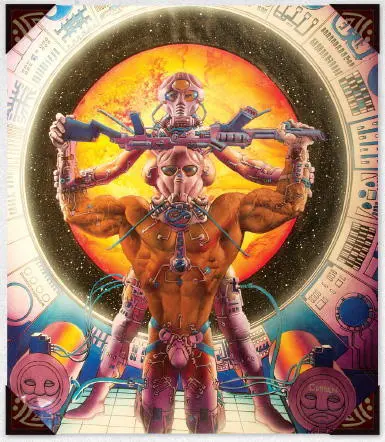
Hanging at Bleak House is the original art for the poster by Richard Corben that del Toro had over his bed as a teenager, and which continues to influence his imagination.
“You write a single book and you make a single movie,” Guillermo notes, but “the reality is that you graft all of them together. You do it whether you want to or not. Renoir, the painter, put it very nicely. He said, ‘A painter paints the same tree all of his life.’”
For Guillermo, the accident of timing, of being born now, allows him to work in film. Combining all the major arts—painting, sculpture, photography, music, writing, performance—cinema melds them into a form and experience that is greater than its parts.
What has emerged through the alchemy of Guillermo’s engagement with the cinematic medium is an artist who is utterly unique—one who blends popular culture with profound ruminations on the human condition, who juxtaposes Hollywood and Latin America in equal measure, who alternates between personal, lower-budget, Spanish-language films and Hollywood tentpoles that still manage to communicate a personal viewpoint, philosophy, and aesthetic.
In fashioning his work, his self, the things he creates, and the spaces in which he moves, the totality of the face he shows the world, Guillermo projects an idiosyncratic persona, one whose resistance to classification is its greatest strength. His films, too, resist classification, although strong sympathies are felt across them. Motifs such as clockwork beings, uterine caverns, and tentacled monsters travel freely through his films and his notebooks.
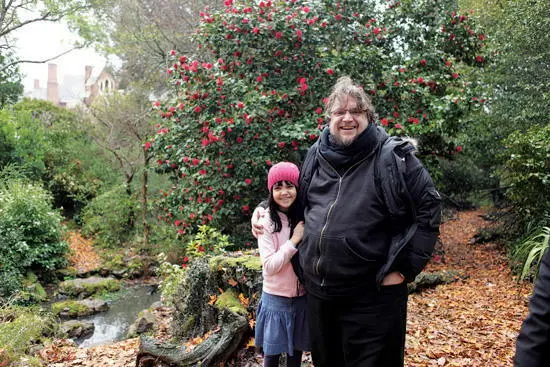
Del Toro with child actor Bailee Madison on location for Don’t Be Afraid of the Dark. Child protagonists often feature in films written and directed by del Toro.
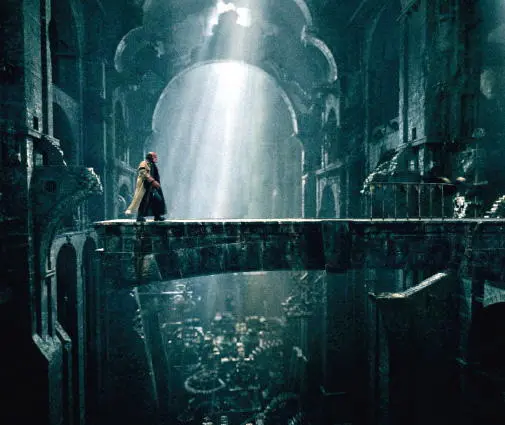
A scene in Hellboy reminiscent of the landscapes of Arnold Böcklin (1827–1901), a Swiss symbolist painter who has influenced del Toro’s aesthetic.
In his focus on these very personal obsessions, Guillermo works in a noble tradition, for the definition of a great artist often lies in his determination to fixate on things the majority deliberately ignore in order to construct an orderly life. “Eye protein” is what Guillermo calls the distinctive language of symbols and visceral figures he weaves into the tapestry of his films. “Fifty percent of the storytelling in a movie is submerged beneath the screenplay,” he says. In other words, the vast freight of meaning lies in the tension between what we can and cannot control, in the play between the conscious, the subconscious, and the unconscious. “In the symbolic and Jungian sense, and in every sense,” he adds, “I am interested by surface and beneath.”
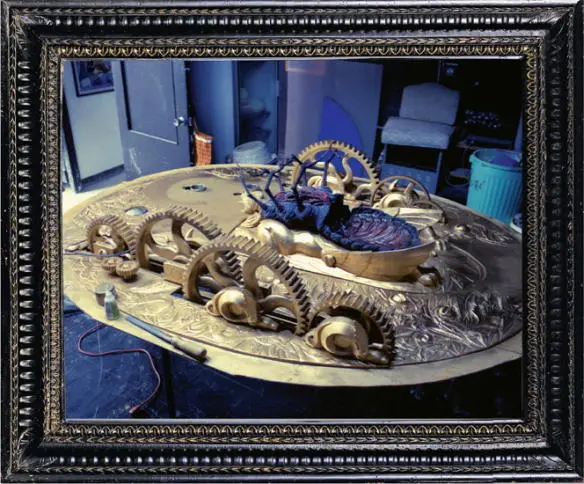
The inside of the Cronos device, which had to be built at an enlarged scale so that it could be filmed by del Toro and his crew using the technology available to them at the time.
The self-invention of Guillermo del Toro began on October 9, 1964, the day he was born in Guadalajara, Jalisco, Mexico.
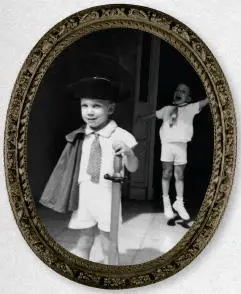
Guillermo del Toro (front) and his brother Federico (back) at the steps of their great aunt’s home.
“I was a very strange kid,” Guillermo remembers. “I was Aryan blond. I was like a German. And I was constantly ostracized because I had super-bright blue eyes and Roy Batty—white hair and was very thin, incredibly thin. I was constantly berated as a wimp, and I identified with those shortcomings; I felt like a freak. The nice, healthy kids were all those outgoing kids with dark hair and a tan. That’s one of the reasons why my villains are like that.”
Early in his youth, an event occurred that changed Guillermo’s life forever. “My dad won the lottery when I was four years old, and we bought a bigger house. My dad’s a self-made man, a very successful businessman, but he stopped going to school when he was very young, he never read, and I think he felt funny about not having a proper library now that he was rich. So he bought a collection of books for kids that I read. It was all the classics: Hunchback of Notre Dame , Edgar Allan Poe, this and that. But the real great thing for me was that he bought several encyclopedias, The Family Health Medicine Encyclopedia and one called How to Look at Art that was ten volumes. It took you from cave paintings all the way to what was then modern art: cubism, Klee, abstract art, pop art. I read them all, several times actually, and I consulted them a lot. Those were the beginning.”
Читать дальше






